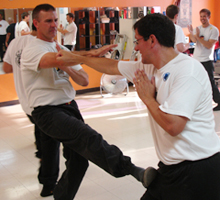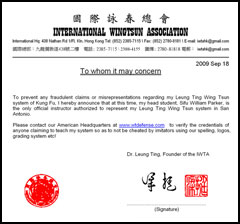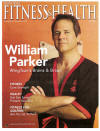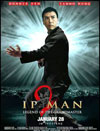If we keep things super simple, there are basically two areas which we need to be concerned with: A) the tactile portion; i.e. contact, bridging, use of force, etc., and B) the visual portion where contact has yet to occur but “things” are in motion! In both cases, there are usually cues, which can help us respond effectively, if we can accurately read them in advance and reduce our reaction time. In WingTsun, these considerations are of primary concern, and its concepts and techniques offer us logical solutions to these questions.
For the tactile aspect, where contact has already occurred, WingTsun’s chi- sau training is our unique method for interpreting contact and dealing with it in the fastest and least labor intensive way. By “contact”, I mean either, A) the aggressor has already launched an attack and at best, we can only defend or bridge, i.e. the Chum Kiu, before we get our “turn”, or B) we had the time to directly counter, yet our aggressor has defenses as well, and we consequently have an “obstacle course” to get thru while not getting hurt in our efforts. Muscle memory is the common term we hear as it applies here, and the only way our muscles can develop “memory” and consequently send our bodies the correct signal in how to respond is thru repetition. Speed of recall and response time depends in great part to “familiarity” with the situation.
The same is true of the visual aspect where contact has yet to occur. The more you can have un-rehearsed practice whereby your partner can attack you in any way, i.e. kick, punch, take down, etc., the more pictures your brain can take and consequently accelerate your response time. Again, familiarity, for the brain and body is the key!
Obviously, there are an infinite number of variables which can change any given self-defense scenario, and I make no attempt to even address these endless hypotheticals here. The main point is that regardless of style or system, we all have to contend with the same problems. Think of the number of punches a boxer has thrown or how many punches have been thrown at him. Countless reps and “picture taking”! The result is that after a while, various movements and their intentions are correctly perceived and processed in a much shorter time frame. The same can be said for hitting a baseball or any other hand-eye coordination exercise. In layman terms it works like this: eyes see motion and send the picture to the brain, and the brain then processes or recalls the motion and finally sends the signal to the body to respond.
In short, repetition in both tactile and visual training is the key to “familiarity” and reduced reaction time. The more familiar you are in different situations, the faster and more effectively you can respond! Repetition is also the key element to power generation and speed, and without these, even the most perfectly executed technique can be foiled! Knowledge of techniques alone won’t get the job done either, and without the willingness to train and repeat under increasing levels of resistance, the results might not be what you imagine. Less trained more is better than more trained less, and more trained more is the ideal! Do your reps!
As always, if you’re having fun, the time passes fast!
Best Wishes to all-Will





